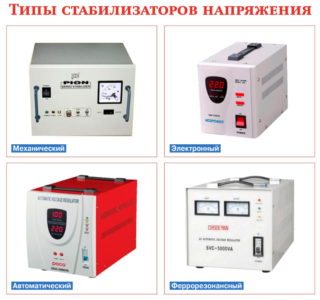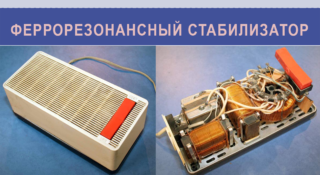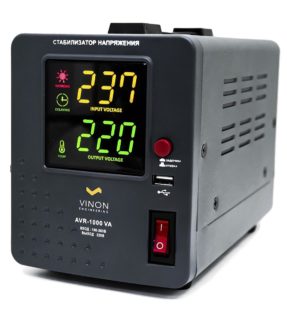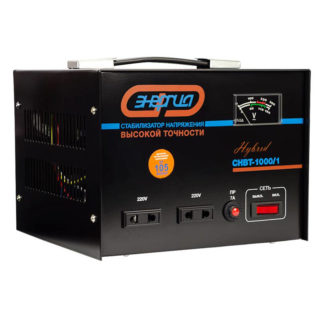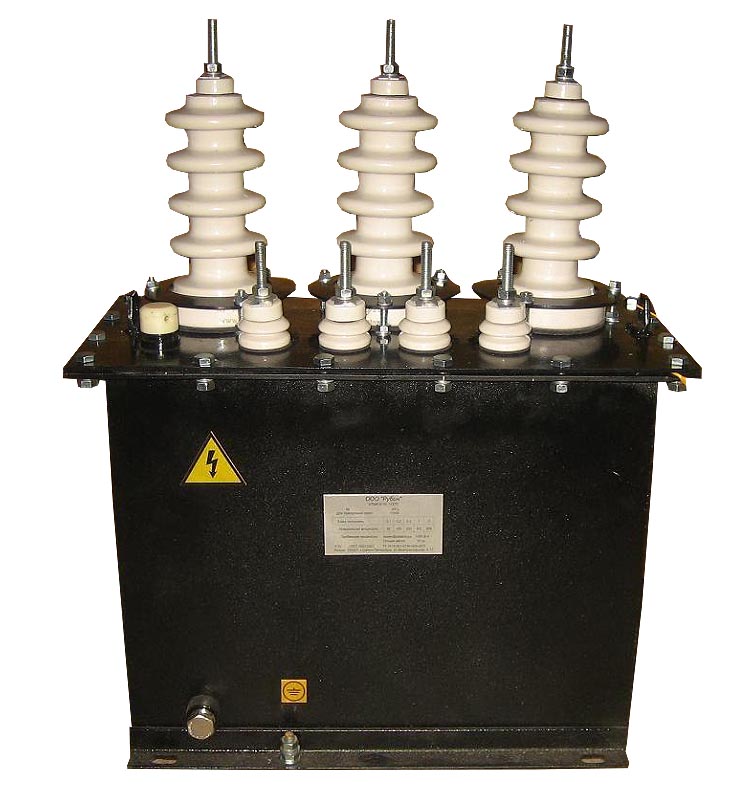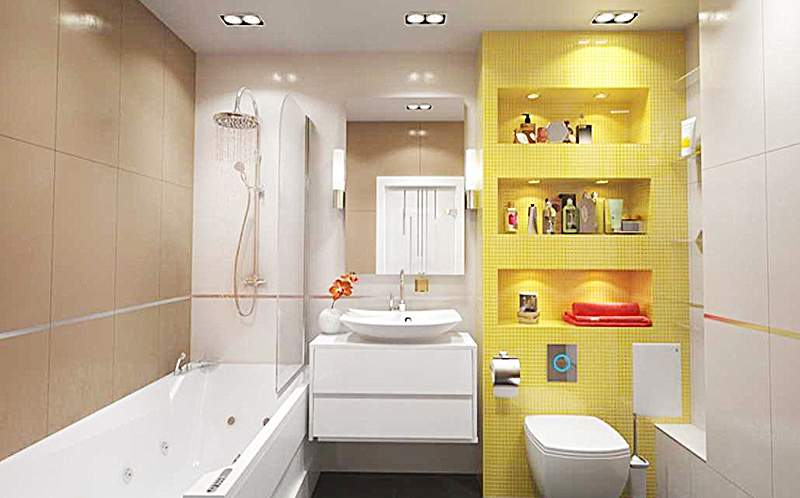The demand for high-quality voltage stabilizers is only growing every year, which is explained by the increased number of household consumers, as well as a decrease in the quality of the network product. The domestic market offers a large selection of inexpensive and reliable models of stabilizing units that guarantee the consumer a normal power supply. Before going to the store for a purchase, it is advisable to understand the features of these devices, as well as familiarize yourself with how to choose them correctly.
Purpose of voltage stabilizers
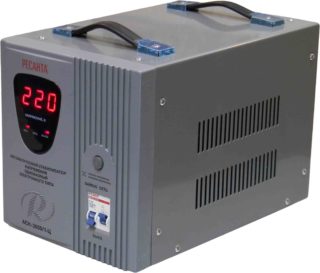
The main purpose of the units is to supply the consumer with a stabilized voltage, allowing it to be used to operate the household appliances available in the house. These devices are necessary to improve the quality of electricity supplied to the consumer, which has deteriorated significantly in recent years.
This applies not only to the amplitude of the voltage transmitted through the network, but also to its shape, as well as the magnitude of nonlinear distortions (deviations from a sinusoid).
All of the above characteristics can be corrected by converting the low-quality voltage and then bringing it back to normal.
For this, the device includes mechanical, electromechanical or electronic components responsible for correcting the sinusoid at the output. For home conditions and for a work office, a 220 V voltage stabilizer designed for single-phase power supply is optimal. If you have this converting device, you do not have to worry about the safety of the radio equipment and other household appliances connected to it.
Stabilizer types
Regardless of all the above parameters, the classification of these units is based on the principle of operation or a typical circuit that allows you to obtain the desired output voltage. According to this feature, the stabilizer models offered by the market are divided into the following main types:
- relay units;
- ferroresonant (parametric) devices;
- electromechanical models;
- semiconductor (thyristor or triac) products;
- inverter or electronic stabilizers.
Each of the listed devices has its own distinctive features associated with the principle of converting the input voltage and the connection scheme used for this. They differ in their appearance (design) and the price declared by the manufacturer of a particular device.
Relay
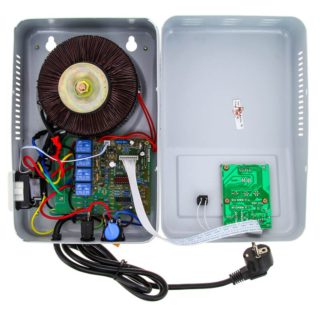
Classic relay voltage stabilizers belong to the category of electronic devices operating on the principle of stepwise transformation of the input potential. Their design is based on an autotransformer, the output windings of which are switched in such a way as to correct fluctuations in the network.
The change in the number of turns in the secondary winding occurs automatically due to the operation of built-in switching devices - electromagnetic relays.
A special block is responsible for the switching order of relay elements, which experts call the control unit. With its help, it is possible to control the parameters of the mains voltage and, when deviations from the norm are detected, to put into operation the next stage of stabilization (according to the number of e / m relays).
The main advantage of relay devices, if we compare them with the already outdated models of the compensation type, is the high speed of operation of the steps (about 10-20 ms). In addition, such control modules are quite simple, which greatly facilitates maintenance and repair of the finished product.
The disadvantages of relay machines include insufficiently smooth adjustment of the output potential and a low working life. Many users are annoyed that during operation this unit constantly clicks (due to switching relays). The main area of application is low-power equipment connected to networks with a low rate of input power instability.
Ferroresonant
The advantages of ferroresonant stabilizers include the absence of movable (switchable) catch, and as a result, a low probability of failure and a working resource greater than that of relay devices. In addition, with their help, it is possible to achieve a more accurate setting of the output voltage and smooth adjustment. Their disadvantages are expressed in the following:
- noise during work;
- significant heat generation;
- bulkiness (large dimensions);
- small range of regulated voltages.
Despite these disadvantages, ferroresonant stabilizers still enjoy a certain popularity among consumers. Their area of application is the protection of old household appliances, which are unpretentious in handling.
Electromechanical

Devices of this class appeared on the electrical product market at about the same time as their ferroresonant counterparts, although they differed significantly from them in their design and principle of operation. Their main working unit is an autotransformer with a movable current-collecting contact placed on it.
The adjusting element is made in the form of a slider or a removable brush of a special design. When the device is in operation, it moves along the transformer winding, smoothly increasing or decreasing the conversion coefficient, which makes it possible to effectively correct the input voltage.
The first samples of electromechanical devices had manual adjustment - the movement of the slider along the windings of the autotransformer was assigned to a person. In modern models, this process is automated through the use of a special control module.
Their advantages and disadvantages are the same as those of ferroresonant samples, and their area of application is devices that do not require high speed.
Inverter (stepless, transformerless, IGBT, PWM)
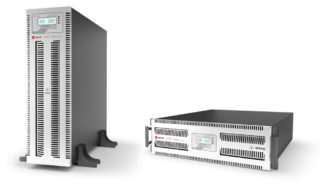
This type of regulator belongs to the family of modern stabilizers with improved manufacturability, produced since the beginning of the century. The operation of the devices is based on the principle of double conversion of the initial voltage, due to which it is possible to form a signal of the desired shape and amplitude at the output.Since there are no mechanical and electromechanical units in modern impulse units, they operate completely silently, have high speed, and are not inferior in reliability to any of the known samples.
The advantages of these devices also include:
- extended boundaries of smooth regulation of mains voltage and load current (90-310 Volts);
- the presence of filter modules at the input and output of the device, suppressing network noise;
- compactness and low weight.
The only drawback of typical inverter converters is their high cost.
Electronic (triac, thyristor)
There are also varieties of units on sale in which semiconductor transistors perform the function of switching keys.
Due to the use of electronic components, these devices operate absolutely silently.
Other advantages of inverter circuits and devices include:
- high speed and lack of mechanical components;
- durability and reliability of their constituent semiconductor parts;
- wide range of voltage regulation;
- thermal stability and high efficiency, which is explained by the economy of the elements included in the circuit (including field-effect transistors, which practically do not consume current).
Their disadvantage is the same as that of relay analogs - this is due to the discrete nature of the output voltage control.
Selection rules
Before deciding on the choice of a stabilizer by the type of power supply, it is important to determine in which networks it is supposed to be operated. If you plan to use it in an apartment in a city house, the owner will need a typical single-phase device. If the buyer intends to use it at the dacha, where there is a 380 volt power supply, only a three-phase sample will do.
Before going to the store, it is important to familiarize yourself with the manufacturers of these devices and choose a company with a good reputation for yourself. In this case, it does not matter whether it is a domestic company or a foreign one, since our manufacturers are also capable of making competitive models.
Model overview
The rating of stabilizers for the home is headed by a model from the manufacturer "Resanta", which produces products with an excellent ratio of price and quality. The devices of this company are capable of operating with loads of various sizes (power from tens to hundreds of watts). The assortment of "Resants" includes many single-phase relay-type models, but there are often samples with double voltage conversion (inverters). This brand has practically no drawbacks (except for the price).
The second position in the rating is occupied by Energia, a diversified company that has only recently mastered the production of high-quality stabilizers. All models of this manufacturer are distinguished by a verified ratio of quality and price and are in constant demand among the Russian consumer. Their advantages also include a wide selection of different designs.
Next comes the company "Shtil", which produces budget products and models of the middle price category, as well as premium class samples. Electronic inverters are especially popular, which are not inferior in their capabilities to modern uninterruptible power supplies.
The last in this list is the Finnish company Sven, whose products are suitable for both home and work office. Prices for products from Finland are quite affordable for an ordinary user with a consistently high quality.The service life of all manufactured models, according to the manufacturer, is on average at least 10 years.
Voltage stabilizers for giving
At dachas, special models of stabilizers are traditionally in demand, which can be connected directly to the input panel through a separate machine. They are distinguished by a relatively high conversion power, since they are used to work with specific summer cottage equipment (pumps, irrigation systems, etc.). You can connect these devices to the stabilizer through a special distribution block or through the socket provided in some models.
At the dacha, it is necessary to have grounding, through which it is possible to secure work with garden equipment.
In the open air, not only the metal parts of the units used are reliably grounded, but also the case of the stabilizer itself, installed in the linear circuit.
When choosing a stabilizing device intended for a house or a summer cottage, they proceed from the calculation of the permissible power in the serviced load. Therefore, when evaluating various models for this parameter, it is selected with a small margin (about 10-15 percent).

